| Gun cleaning can be a pleasure or chore, depending on how you look at it. The tools and cleaners available today are staggering, but leave a lot of choices for the consumer. Blued guns like this look beautiful, but they need a little more TLC than some of the more modern finishes. The area where aftermarket sights meet the slide can be an area where rust sneaks up on you. Q-tips can really get into this corner and get the crud out. Revolvers, while less maintenance intensive with such items as springs, etc., still need periodic maintenance and good cleaning when you shoot them. I use Q-tips or other cotton swabs to reach a lot of hard to reach places. They absorb dirt/grime nicely. |
By Brian Jensen
OK, so if you’re here, you probably own a firearm of your own, or you may be looking for one. Owning a firearm, such as a pistol, is a lot of fun but it’s also a lot of responsibility. One of those responsibilities is the proper care and maintenance of your gun. If you want it to last, taking proper care of it is the key.
Be it rifle, shotgun, or handgun, each has it’s own particular characteristics. Here, we’ll talk about caring for handguns, both revolvers and pistols. Revolvers will generally need less in the way of maintenance, but will still need your TLC from time to time. Take a few minutes to pull that wheelgun out, look it over, and wipe it down if need be. In a similar situation, stainless guns will need less maintenance, but they can and will still rust if not properly cared for.
First off, there is a difference between maintenance and cleaning. One is done to keep the gun ready on an ongoing basis, and preserve it long term (maintenance). The other is cleaning he weapon after use. Both are important, but both hold slightly different roles in the care of your firearm.
Before we get into the specifics about caring for the guns, let’s pause here just briefly to go over where you do your work on them. Select a place that’s clear of clutter, and with a flat surface. Avoid places that have carpet or rugs as they will suck up and eat small pieces.
Most importantly, make sure the gun is empty, and if you need to, remove any and all ammunition from the room. I cannot emphasize this enough. Far too many people have been hurt or injured by someone cleaning an “unloaded” gun. Before you even start doing anything to a weapon you bring into your cleaning area, clear it, check it two or three times, then recheck it. Once you know it’s empty, and visually as well as physically check the chamber, you can begin. This goes back to the standard principle that you should treat every gun as loaded until you check it for yourself. When you sit down to clean or work on your gun, make sure you check to make sure it is empty first.
Maintenance
Maintenance is less about keeping a pistol clean, and more about keeping it ready to go when bad things happen, or just for when you want to take it to the range. You may even just be making sure it stays in good shape for your kids when they inherit it. Most guns will outlast the original buyer when properly maintained, but the problem is many people forget this and leave their guns sitting in a safe, drawer, or on top of a shelf in their closet. I’ve even recovered a few that were sadly stored in a a closet with the water heater. (Just know, moisture + metal objects/tools/guns = rust) Very few guns survive this forever.
I won’t get into the merits of regularly shooting a gun you intend to protect yourself with (it is really important DO IT), but even if your gun is going to sit without being shot for long periods of time, it really needs to be checked out regularly. Otherwise you may take it down from the shelf one day and find that a whole side of it is caked with rust. Worse, it may have internal rust you can’t even see, but we’ll get to that.
For external rust, old style blued guns suffer the most in this. They have less protection against the elements than say those with more modern finishes, like Melonite or Tennifer. Stainless guns, and the chrome and nickel coated guns are also very good, but they too can pick up rust spots, and these can sometimes threaten good function.
Just handling older style blued guns can deposit oils from your skin onto the surface of the firearm. Those oils alone can start to bring on rust given the right conditions. The best rule of thumb, if you take it out, rub it down with Rem-Oil or silicone cloth before you put it away. Much less, if you take these guns out into the field, they will need to be wiped down as well.
Even guns with Melonite or Tennifer can get rust. Especially in areas such as aftermarket sights, as they will not always have as robust a finish on them, and rust can develop where they meet the slide surface.
Take a Look Inside
After checking it on the outside, I field strip the gun every so often, and look at the innards. Sometimes rust decides to go after parts inside, rather than outside. Alloy and polymer frame guns can be notorious for this. Aluminum and plastic don’t rust, but the carbon steel parts inside such as springs, sears, etc. certainly will, and are easy to forget.
All guns, whether stainless, coated, or blued will need this. Just taking the time to take it out, look it over, and wipe it down will do wonders to keep it in order. I spray into the action with Rem-Oil until it drips out the other side on all my guns that I know are going to be away for a while without being used. I have found that Rem-Oil leaves a coating that is safe for both blued steel and wood, and polymers of course, and that it doesn’t attract dust or dirt.
For a gun that’s going into storage, there are moisture protection bags to put them in long term. Dehumidifiers for your safe are also available, called the Goldenrod that you plug in, and there are several types of silicone moisture absorption systems that can be refreshed periodically by baking them in the oven if you don’t want to plug in your safe.
As an example of how important it is to check guns inside, a federal marine unit recently found out their HK’s were great in every respect, except their hammer spring, which rusted easily under saltwater conditions. The gun looked fine outside; that was until they pulled the trigger and heard a “crack” as the spring broke. Now it was a nice German paperweight…Once they realized the problem, they created a maintenance schedule commensurate with the needs of the pistol
The goal is to keep your friend up and running for a lifetime. It’s not terribly hard if you give it some periodic TLC.
Cleaning
There are those who love to brag as to how long their favorite “brand x” pistol went between cleanings. What I rarely hear them brag about is the time it takes to eventually clean up the gun after these marathon sessions. This may be great for gun demo’s, or bragging rights, it’s horrible treatment for a tool that’s supposed to keep you alive when you need it to defend yourself.
If you get your gun dirty, clean it. Even on a plastic pistol, most of the parts of the gun that involve firing are made of machined steel. This steel travels back and forth over other steel, and the tolerances between these two parts is machined to an exact specification, usually within a few thousands of an inch. If you get burnt powder in this space, or sand, or dust, or anything else, the stuff in there turns into sandpaper, grinding away at the working surfaces of your gun.
I used to dread cleaning, and put it off for far too long. But I soon learned from a good friend who introduced me to shooting, one of the best parts was the after-shoot cleaning time. We could talk, brag, or joke around while we cleaned our guns, and some of my best memories are from those times. After a while, I learned to consider cleaning a time to relax, and I really of enjoy it now.
When you clean your handgun, whether it’s a revolver or a semi auto pistol, you need to use good quality cleaners. Fortunately, there are a great abundance of good cleaners out there today. Some are classics like Hoppe’s or Ballistol that have been around for years. Others like CLP have become a mainstay in the last decade or so. Regardless, there is usually something out there for your needs.
While some like to use all in one lube/cleaners, you sometimes need a specific copper remover or cleaner for your weapon. I like Hoppe’s #9 or Gun Scrubber for a heavily dirty barrel or to remove lead from my revolver. If the gun has old style bluing, I like to check the cleaner first on a hidden area to make sure it won’t damage the finish.
Beware that if the cleaning product you intend to use says “rust remover” on it, bluing is a slow rust process and will not survive even a dab of this cleaner.
I field strip the gun (after clearing it, of course) and clean/scrub the barrel, slide, and inside the frame. I take care to remove any carbon, lead, fouling, and whatever else is there, with a spray, brush, Q-Tip, rag, or some of the other things I will share in the tips below. Once these are cleaned I apply oil to any place I have metal to metal contact. This usually means the rails (both slide and frame), barrel, and if it has one, the barrel bushing.
Once it’s all put back together I function test it. I take an EMPTY magazine and place it in the gun, and pull back the slide, and see if the slide lock works. Then, I eject the magazine, and rack the slide a few times. I then place a pencil, eraser side first, in the barrel, and pull the trigger. If the pencil shoots up, the firing pin / trigger system is working. I then rack the slide and verify the hammer/trigger reset. Once it all checks out, you’re good to go.
Revolvers, especially stainless ones, are a bear when it comes to cleaning. The lead and fouling that accumulates in rings around the face of the cylinder are a real pain to get off, and take considerable time, solvent, and elbow grease from my experience. A good solvent such as Hoppe’s #9 and a bronze brush is the best tool I’ve found for this job. Be careful with steel brushes they can damage many types of finishes.
The cylinder face and top strap on a revolver are easy to overlook, but these are crucial areas to really get clean. If you don’t use a bronze brush to scrub, scrub, scrub all of the black carbon deposits away, these will be compounded the next time you shoot your gun.
Generally I don’t take either a pistol or revolver beyond the level of field stripping for a good cleaning. But outside of periodic inspection, again, I tend to spray Rem-Oil through the action and let it drip out the other side. Rem-Oil is your friend and I use it for everything.
Cleaning the barrel may seem like a no-brainer to you, but there is an important consideration you should be careful of. The crown of the barrel effects accuracy more than anything else on the gun. If you nick the inside of the barrel end with a steel cleaning rod, it can seriously effect accuracy. The brass rods you get in a cleaning kit aren’t an issue. Brass is softer than steel so can’t harm it. But some of the high end cleaning rods are steel, and with many you have to pay extra to get the brass sleeve that protects the bore. This is a very important addition to any steel cleaning rod. These days there are great fiberglass rods as well and I suggest them regardless.
On an auto-pistol, where you are taking the barrel out of the gun before cleaning it, clean it from the back, and use your toothbrush or other hard bristle brush on the feed ramp to get it nice and shiny. Crud can build up on it and this is a primary cause of failures to feed.
There is no mystery to cleaning barrels. If you are shooting copper jacketed bullets, check to see if there is copper fouling. If so, get some Hoppe’s copper solvent and a bronze brush. If you have lead fouling from shooting lead, make sure your lead isn’t too soft, and that you aren’t loading the lead too hot. It is important to check this stuff right away when you shoot a new load of ammo, or a new brand. Fouling can build up, especially with lead.
My favorite way to put patches down my barrel is to use an old bronze brush and put the patch on that, dipped in Hoppe’s #9. It cleans the rifling nicely, but you can use that brush as a brush anymore so make sure to use an old one. Also see the top about the Hoppe’s Bore Snake. It is a fitting replacement for patches.
Special Situations
For those in salt water or marine environments, cleaning is even more important (as is maintenance). Salt water will do a catastrophic number on a gun if left alone. I once jumped onto a sinking boat on San Diego Bay, and left my S&W 640 .38 stainless snubbie on my ankle. The gun needed a complete strip down and cleaning. I even took off the side panel of the revolver and cleaned it out.
Needless to say, anytime your gun gets dunked, in fresh or salt water, you need to completely disassemble it and make sure the parts are clean and dry. Wet parts can be put in the oven even (not plastic grips or frames), and then Rem-Oil them good. If your gun goes into salt water, make sure to put it in fresh water as soon as possible to stop the corroding power of the salt water. Gun Scrubber will also displace moisture on a temporary basis.
Some weapons, but very few, will need something more robust than gun oil to keep it reliably in service. Greases will stay in place longer, and have better factors for lubricity. The down side is they attract grime much easier than oil. It is better to use a thinner oil more frequently than a heavy grease infrequently. The dirt that even Lithium grease attracts will eventually turn into sandpaper in your action, and wear down your internal parts.
Tools and Tricks of the Trade
Every task these days has shortcuts and tricks that make them easier. Gun care is no different. Household items as well as tools from the gun industry can make the task of cleaning or maintenance much easier. Guns are especially frustrating, as many have little spots that are hard to get at that accumulate grime.
Q-Tips or cotton swabs – I have found these are lifesavers when getting into nooks and crannies of the underside of a slide, or inside the frame. They are a must have in any gun cleaning kit. I just buy the biggest, cheapest packs I can find. Using these cotton swabs, I can get into places more thoroughly than I would have been able to, or unless I’d completely disassembled the gun.
Pipe cleaners – You can find these in the craft department at Wal-Mart. They are great to slide between close machined surfaces that are hard to get a patch or cloth into. Some meticulous cleaning may seem like overkill, but it is really up to you how clean you want to get your own guns.
Silicone/Rem-Oil cloths – These are fantastic tools to give a wipe down of guns that you’ve handled. It can clear off any oils from your hands that may cause rust. That’s especially true for those older style blued guns. If you find yourself taking your Pedersoli Sharps rifle, or old Stevens doublegun out of the safe to fondle it once in a while, keep a can of Rem-Oil and a silicone cloth on hand, or the Rem-Oil wipes. They can mean the difference between a gun that looks like it did when you bought it for the rest of your life, and one that has round rust marks in the design of your fingerprints.
Hoppe’s Bore Snake – The Hoppe’s Bore Snake is one of my favorites tricks of the trade. I have one for all my calibers, and they make cleaning much easier. I scrub down the bore with a good solvent and then run the snake through. 99% of the time I have a gleaming clean bore. For those times it isn’t quite enough, I just repeat the process. These remove the need for patches, and can be reused for years with or without dipping them in Hoppes #9 (but I have to admit I’m a dipper).
Brushes – Toothbrushes are pretty good to get the slots and grooves clean inside the slide of an auto, but they tend to not be tough enough. To get some of the more stubborn grime, you need something generally with more tenacity to the bristles than the usual Oral-B. Companies like Otis make all types of gun cleaning brushes in various bristle types. Copper and nylon are good for the specific applications, and they are relatively inexpensive. It never hurts to have a toothbrush on hand though.
Gun Scrubber or other spray solvents – When I first started shooting, my friend used to use braek cleaner to spray down his all steel S&W semi autos. Today, Birchwood Casey has come up with Gun Scrubber, as well as the countless other versions from other manufacturers. These are far less caustic than brake cleaner, but spray into those hard to reach places and clear out grime like it was nothing. Just re-oil and you’re in business. These can, however, remove paint, as well as some wood and metal finishes, so be careful. Newer versions are even safe for polymer framed guns as well. This alone had saved me countless hours of cleanup when dealing with the underside of the slide, or inside my 1911 frames.
Dental & Electronics Pics/Tools – I have used these extensively, (my Mom worked in the dental field, and I was able to stock up on these before she retired.) These give us the best ability to get to little areas to remove caked on or stubborn grit, even rust, that has accumulated. You can find these on Ebay, or you can pick up the electronics variety at Radio Shack. Be careful with any steel tools. They can easily scratch off your finish. I use pics wrapped in a cleaning patch doused in Hoppe’s #9 to get into the small crevices.
Don’t Be Lazy!
A firearm is a significant investment, and unlike many of the other big ticket purchases in our life, like cars, stoves, cameras, TVs, they almost never end up going to the dump or junkyard when you decide you want a different one. Guns are the ultimate “durable consumer good.” They almost never get thrown away, and they are seldom worth less than 25% less than you paid for them. Often they are worth several times more later in life. If you take care of your guns, they will take care of you, whether it be protecting your life, service in the field, or as your own little retirement account locked in your gunsafe. By keeping them clean and making sure that no hidden rust or corrosion is creeping in, you will keep them in service for a lifetime, and possibly several lifetimes.


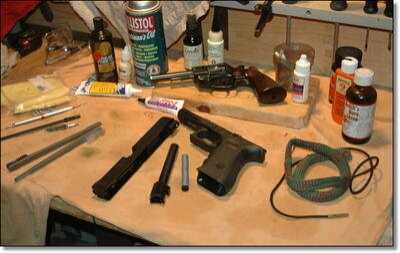

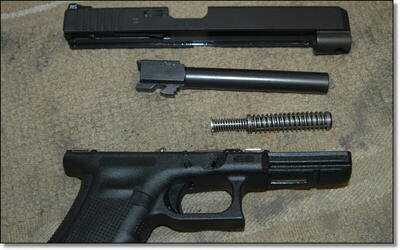
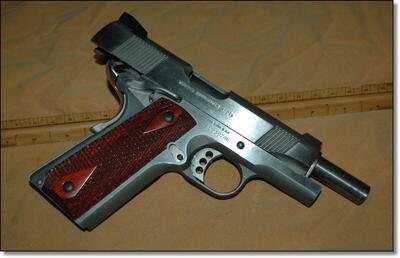
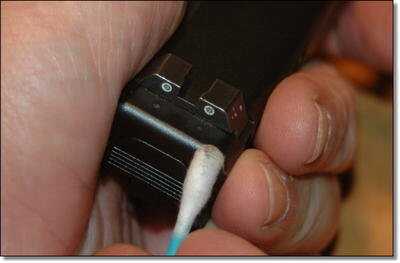
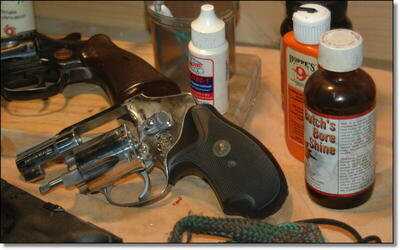
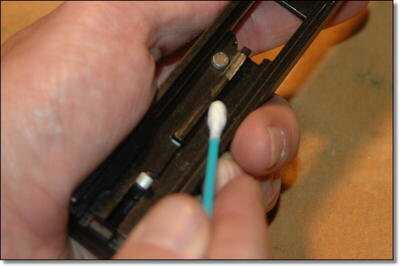
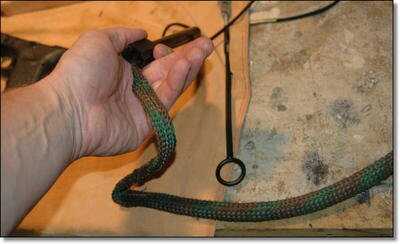
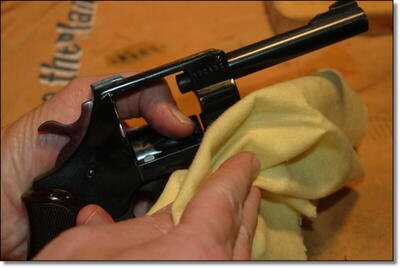
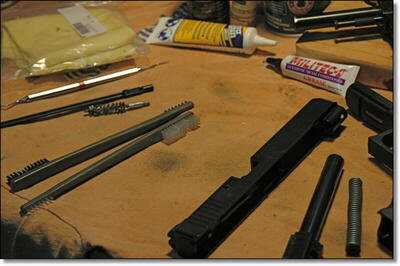
Post more! Seriously, I am really digging what you have written so far. I\’ve scanning your blog right now for more things to read.
Just make sure to get some good CLP. If you’re trying to save $2 in CLP, you’re sacrificing a lot of quality. It lasts for years anyways, just spend the extra few dollars and buy something decent.
Well-written post and very informative too. Just so glad to have read something like this. As far I as remember, this is the first article that I’ve read which is about cleaning a gun. And you did a great job on this. Thanks for sharing.
It?¦s really a cool and useful piece of information. I am happy that you shared this helpful information with us. Please stay us up to date like this. Thanks for sharing.
By David Wood and Geoff regrind
if you take care of your guns, they will take care of you. I always perform regular cleaning for my guns and keeps cleaning kit for a browning hand gun solvent. It makes me at ease knowing that my gun is in perfect condition every time i need to use it.
@DaFadda – an air compressor is also great for cleaning any of the electronic you have in your house – computer etc – so it’s really a good investment to just buy one. Compressed air in cans is just SO expensive that it doesn’t even make sense to buy more than two cans or so it runs out so fast.
Do you use the Rem-Oil with VCI Technology or without?
What about EEZOX ? Have you ever used that?
thanks
Wolf
Regular rem-oil. no.
I almost never drop remarks, however I read a few of the
responses here How to Clean and Maintain Your Handgun – Brian Jensen.
I actually do have a couple of questions for you if you do not mind.
Is it only me or do some of the responses look like they are written by brain dead visitors?
😛 And, if you are posting at other online social sites, I’d like to follow everything new you have to post. Would you list of all of your public pages like your twitter feed, Facebook page or linkedin profile?
It is funny this is an automated spam comment and they actually know that every blog has boneheads writing comments.
I am going to buy 357. this blog has helped me different ways for clean
This is a good catch-all article. Everyone has opinions – as seen here – but the fact remains that regular maintenance and cleaning is vital. Even if a weapon would perform adequately without regular cleaning and upkeep, why would you not want to take that chance? There are no bragging rights after that one time of weapon failure when you need it to perform…
Magnificent goods from you, man. I have be aware your stuff previous to and you are simply extremely fantastic. I actually like what you have received right here, certainly like what you’re saying and the way in which in which you say it. You are making it entertaining and you continue to care for to keep it smart. I cant wait to learn far more from you. That is really a tremendous site.
I have a tried and true but rather unorthodox way of maintaining my weapons when I am down range in the the dust for extended periods. I used to have problems with lubricating oils acting like a magnet for fine dust and bits of sand. I knew that I couldn’t trust a weapon if it had absolutely no lube at all, so I came up with a winning solution. Graphite lube.
Every few days we would hook up the air compressor attachment and blow out all the old dust or dried mud from our weapons, then we would sprinkle in graphite powder in the places it needed just like lubing with oil. I call this the “dry gun” technique. I have done this for years with service weapons and with some of my own weapons here at home. It is way more reliable than using oil because of frictional viscosity of oil on full auto weapons, graphite cannot “cook off” from hot parts and cause a seized weapon, uniform coverage of parts inside the gun is automatic because the powder gets blasted around when you cycle the action a few times for a functions check.
This method has a number of advantages and only one disadvantage to my way of thinking. That downside is when the time comes to turn the weapon back into the armorer or when you want to have a “white glove” inspection on the inside of your gun, the graphite dust coating everything inside looks just like carbon dust from a few thousands rounds. Drop and give me 25!
I won’t do this to my antique blued guns but I do it to my guns that are parkerized, stainless, tennifer, alumahyde, etc. If you have easy access to any air compressor and a $2.00 tube of graphite powder you could try this on your “tough gun” of choice. Saddle guns, four-wheeler guns, truck guns, are all good candidates for being dry guns.
Great article. Cleaning your firearm is very important and storing it properly is just as important. I learned that the hard way and my 1911 ended up getting some rust on it when I did not store it properly. Luckily I was able to remove the rust and the gun still looks great!
http://youtu.be/Q3hZJnkwycw
http://youtu.be/FdtxGpi2jeQ
good informative article. One piece of equipment I would never be without again is my small air compressor. Once I’ve cleaned parts as described, a good blowing off with an airgun takes MOST of the extra oil off. Then I reapply exactly where I want fresh oil.
Informative article– I would suggest using Break Free– I spray it on all parts and then use a rod, patches, brushes, whatever and the gun is cleaned and oiled at the same time. Wipe off all the excess and good to go
When using corrosive milsurp ammo in your Mosins and Mausers, spray the bore and bolt with Windex before you leave the range. It stops the corrosion caused by salts in the powder until you can clean it. You can follow up with a spray cleaner / oil if you don’t plan to clean them immediately. I prefer Kroil for cleaning and any good gun lube for oiling. My two Mosins and a Yugo Mauser have wonderfully clean and shiny bores. Just a note – it’s cheaper in the long run to load your own non-corrosive ammo than to deal with milsurp ammo although I confess I occasionally use milsurp when I find cheap deals and it shoots just fine.
Thank you Robert.
I will get a bottle of Windex for my range bag and flush the bores prior to heading home from the Club.
I always clean ’em all up within hours anyway.
Reloading is a tad beyond my current..ahem..budget, considering the initial equipment investment.
I have beaucoups milsurp ammo(pre-Obamanauguration)and only shoot a few hundred rounds a year, so my supply(considering my age)may just last till I’m too frail to shoulder a real man’s rifle.
The milsurp ammo shoots very accurately, even the Pakistani .303 Enfield click/bang stuff.
You just gotta keep the sights on target until it eventually fires.
Your insight is deeply appreciated sir.
Please explain what you mean by “spraying Rem oil into the action until it drips out the other side”, particularly as it relates to semiautos. Where do you spray? On the slide or into the base of the frame? I’ve never taken any of my pistols down beyond field stripping, and none of the owner’s manuals have the process you describe.
QAnother question is the issue of oils versus grease on the rails. I was reading a thread today on another forum on this subject, and there didn’t seem to be a lot of agreement. I note that Kimber ships with an oil packet suggested for use on rails, but not grease. Any comments?
The use of grease that I’ve seen is mostly on battle rifles, such as the M1/M14/M1A where the action bar slides along the receiver. If you’re out in some godforsaken jungle, you may want a more tenacious lube than just gun oil. Unfortunately, as mentioned above, grease accumulates dirt much more readily than just oil, and that becomes a gritty mess that can grind on the metal surfaces.
SIG-Sauer handguns are shipped with a packet of Mil-Comm TW25b grease these days and the action of the guns are packed heavily in this grease when new. It appears some gunsmiths and armorers with expertise in SIGs recommend using a large amount of grease on the rails and action. At first all this seemed contrary to reason since grease has the reputation of attracting and holding all types of grit, grime and residue. However, on further consideration, lubricants formulated for automotive use are designed to suspend contaminants, metal shavings and all form of nasties while still lubricating and protecting. Something along this line, when tweaked for firearms use, seems very practical in use. After all, grease sticks to surfaces better than oil, doesn’t evaporate like oil (but some types might dry out over time) and is not affected by gravity like oil. Slathering on globs of grease is certainly not a good idea but a light coat of grease in place of oil may be beneficial to the function and service life of a firearm–especially on the slide and frame rails of autoloading pistols.
Thank for reminding me it’s time to look over my old firearms. I have restored an old Italian Brescia by soaking it and cleaning it several times. I enjoy the older pieces. I would like to know where I could find out the age of the firearm by the serial number and make? Thanks
I have found another little item that works well for me. Bambo Skewers. I don’t remember where I picked them up, probably Wal-Mart or a craft store, but they have proved to be very handy for getting a little more force into a tight area, a long reach to run a patch down into a magazine opening, into the confines of a firing pin hole, and a gazillion other uses. They’re tough, hold up well and are very reusable.
I use the heck out of bamboo skewers for numerous cleaning jobs including guns and motorcycles. Any cooking store will have them and they are extremely durable. They hold their shape much better then tooth picks and work great for cleaning the rails on your pistol.
Nice article about cleaning and maintenance. I think one more item should be mentioned. The ultrasonic cleaner. I’m a machinist and we have a U.C. for cleaning our parts after manufacturing them. The industrial model we have is way too expensive for the average shooter, like $10,000. But I found that inexpensive models sold at Harbor freight ($80.00), are very effective. I shoot blackpowder guns and the U.C. really cuts down the time spent cleaning. Just remember you must oil the gun very carefully after immersion in the cleaning solution. I also use the U.C. to clean my rifle brass, it is awesome.
Great article. I like to see that we still care for maintenance of our gear as much as using it. It’s just as important to keep our gear clean and in good working order as it is to practice with it. Thanks for the info.
I shoot milsurp ammo from soviet-bloc nations in my Mosin Nagant and Mauser mil. rifles.
The ammo is sold as “corrosive”, so I first pour water down the barrel to remove the corrosive salts(from their primers, I’m told), then I brush and Hoppes the barrel with brass brushes and cotton patches.
Finally, I swab the barrel with gun oil..
I drench the workings and bolt with CLP, wipe it down, and store it.
Are Boresnakes inadequate to the job when firing corrosive ammo?
I got one and nowhere on it does it mention using solvents with it.
I fear leaving salt in the bore and returning to find it rusted.
I treat my 7.62X25 pistols(CZ52 & Tokarev TT33)the same way, as the milsurp ammo is also corrosive.
My questions are;
am I an idiot?
what am I missing?
do you have any suggestions?
Thanks in advance,
Skip
Hay Skippy
To answer your questions: No you are not a idiot, if your missing something it is Maybe some College Chemistry 101, the ammonia in windex is very much more effective at neutralizing the corrosives found in soviet era ammo than all the nasties found in todays tap water, which are probably worse for your barrel than soviet era ammo, as for Hoppes#9 it was formulated back in the days when ALL ammo was corrosive and to my knowledge is is unchanged to this day, so it is your call.
In regards to slathering down your Boresnake with the lions share of a bottle of Hoppes pulling it in the barrel and letting it soak for awhile??? Well that sounds like a rather good Idea! (As the old joke goes “The Three Line Rifle hasn’t been throughly cleaned sense Berlin 1944”) I owned sever Boresnakes my self and when they get grubby I just put them in one of those fine mesh delicates laundry bag you get at the dollar store [To keep them from getting knotted up and or wound around the rest of the laundry] and chuck them in with a load of darks and they come out just fine.
Every thing else your doing sounds like your one the right path to me.
Ben Franklin said it in 1759; “They that can give up essential liberty to obtain a little temporary safety deserve neither liberty nor safety.” It was true then, and it’s still true now…perhaps more than ever.
Thank you Paul!
More helpful advice from the myriad experts here at GunsAmerica.
Ready on the firing line!
Great article. As a kid growing up in Northern Minnesota, I had the opportunity to do a lot of shooting, plinking, target practice, and hunting. The rule of the house (My dad’s) was the first thing you did when you got home was clean the weapon even if you did not shoot it. There was Hoppe’s laying around but I never saw my dad using it. There was however a can of 3 in 1 oil that was used to clean the barrel inside and out. Run a swab down the barrel with a little bit of 3 in 1 on it and then run dry clothes through it until they came out clean then run a new patch through with a drop of 3 in 1 on it. Clean the outside with a clothe rag with 3 in 1 on it then put the gun away without touching any of the metal. Before you took the weapon back out, we would run a dry clothe through to remove the protective oil from it. I can’t ever remember any of our guns having any rust on them or a failure to load or fire. I am now 60 and still follow that rule. Never had a miss fire or any other problem with my weapons. I have two large upright gun safes full of rifles and a semi-large safe for my pistols and it looks like I am going to have to get a bigger safe for them. Space is getting scarce.
I believe personal care of your weapons will keep them in working order. Just my two cents.
Kroil oil is an excellent penetrating , lubricating and cleaning oil(removes all types of fouling from the bore). Recently worked over a neglected and abused K date luger with Kroil oil, unbelieveable results. The oil, saturated on 0000 steel wool, removed rust from all surfaces and did not harm the blueing. Really brightened the bore. Brownell’s has a short clip on how to use the stuff at it’s website.
There are so many gun cleaners I believe more than there are laundry soaps. All claim to be the best Hoppe’s elite , Ballistol, Gunzilla etc. Does anyone know what actually is the best cleaner and what is the best lubrication gel to be used on a gun?
Informative article. I have really bad memories of cleaning my m16 at 3 in the morning, then waiting in line for the Armor to receive it find a smudge someplace and back you go to repeat this process. I just hate that rifle. Now I have lever and bolt actions and revolvers which in just a few minutes to clean up like new. I will never buy a fire arm that is not SS again either. I take 90 percent of the cleaning time away on what I buy. I shoot a lot and clean just a little.
As far as defensive arms go…long ago in a far away land..It was common practice to drag the whole crew out to some spot and have everyone prove their weapons after cleaning and before going to work..
IMO still a good idea today for defensive arms (heck most arms).. Clean it on the range..shoot a couple magazines thru it. Now you know it still goes bang..
Wm.
Great article! It’s always a pleasure to read this information.
Myself, I found a different type of Qtip at Wally World (Wal-Mart)
It is a very small head and in the shape of a V. This is a great help because it gets down into the deep slots where I would have to dismantle the gun, to get to. And they’re the same price in packs of 100, as the other packs.
Really great help when cleaning the slides in my Colt 1911 (1927 Model) and my Llama .40 cal. S&W.
Thank’s for the tip Ron!
If you can’t find the V-tips for tight spots, a hammer flattens a Q-tip nicely.
I do routine maintenace and cleaning on all guns, not just the pistols 2 times a year and just after firing or hunting
in wet weather. One lubricant I use is Amsoils MP mainly because this lubricant displaces water and actually sinks into
the pours of the metal to provide a shield against rust.
Excellent article, I make a habit of cleaning my guns the same day of shooting or no later than the following day. I just recently purchased the Hoppe’s bore snake for all my guns ( what a time saver ). Also wiping the guns down with a silicone cloth keeps the finish looking new, a little extra care goes a long way.
Good article! Tell me about the proper way to clean the barrel? Do you put your patch into the muzzle first or chamber then out?
It is always a good idea to clean from the breech side if you can. But a brass or plastic cleaning rod sleeve is fine on revolvers where you have to clean from the front.
thanks for the info. i try to do it all the time. being a range officer i have learned alot
Thanks for the article! I have not reviewed this process since I got out of the 82nd Airborne in ’75.
In those days, after shooting, the entire company would strip down the M16s and could soak them in a tub of cleaning solvent. So very handy… I don’t have that luxury anymore!
I currently have a Taurus 357 magnum revolver that is miss firing. I clean it pretty well but not by soaking the entire piece. I am wondering if I have carbon built up inside the area where the firing pin is? Maybe the firing pin is unable to give the full punch that it should. I really don’t know what to do about this since the small hole with the firing pin just inside is too tight to get something like a dental pick inside to check it out.
Question: Does the primer have to ability to deposit carbon in that area? If so, is dismantling this pistol a DIY job or should I take it to a gun smith?
Thanks again for the article… Great stuff!
Pat
If you think it is you’re firing pin (you might be right)try some spray cleaner like G-96 into you’re firing pin hole and work the trigger.This might help loosen up the crud that has built up inside as well as help lube and free up the firing pin .You might need to actually soak it good so that the spray is totally dripping so be prepared to go over kill with the spray.Then you might want to use the pencil eraser test mentioned above to see weather you’re firing pin is engaging properly.One more thing before I shut up, depending on how long you bought you’re pistol check you’re warranty if you don’t come up with the best possible result(a gun that fires %100 of the time)don’t send it off to a gunsmith contact the manufacturer.Most manufacturers have awesome customer service,the thing about firearms in general is that there is no other product on the face of this earth where their reputation depends on good word of mouth as most shooting is done at a range in front of other desirable customers.
If you have a Taurus, you’re in luck. Last I heard they still maintain a true “lifetime” warranty. I bet if you call them, they may just have you ship it to them and they’ll fix it. Keep us posted on how it works out.
have a $99 lawnmover I got at a garage sale 18 years ago, never have changed the oil, don’t know if it has oil in it, leave old gas in it over the winter, RUNS PERFECT.
Yeah, and my grandfather smoked 3 packs of cigarettes a day and lived to be 103.
Yeah, and he’s still dead!
Let me know how ths work’s out for you in a fire fight
But then, you don’t expect to ever have to use the lawn mower to save you life (boy, that would be weird).
Re: Guns, I have heard high quality motor oil has been used with success by some people, seems like a practical alternative if you can’t get your favorite gun specific oil to me.
Ha! Emptying your gas tank leaves residual gas in the carburetor, I add stabilizer and run all my small motors quarterly to keep gumming from taking place…doing perfect with this for decades. As far as not changing your oil….all I can say is: May the gods of Quaker State(probably your oil choice for your car!) continue to smile on you until you hit the shear factor. LOL If you haven’t finished learning in life use Penzoil or high quality substitute, like with many things….. There is no second chance so do it right the first time! 🙂
Good article, much the way I clean my guns but am still a little confused on some of the new cleaners/lubes and the way to use them. We hear so much about what is good and bad, it gets to the point that I’m afraid to try any. Maybe I’ll just stick with Hopes and Rem oil.
Maybe a second article covering the use of the cleaners/lubes in detail.
Thanks …(<{:-)
Very good article! I have found another good cleaning/lubricating tool, called Gibbs Oil. It will remove metal fouling, and actually converts rust back into metal (it won”t smooth out the roughness of rusted metal, but it will stop the process). It also is a penetrating lubricant like Rem oil, and will repel dust, lint, and hand oil. Unlike other penetrating oils, it will not cause ammo to go inert, remove bluing, or cause polymer grips to become slippery. It will cause some darkening of uncoated metal. It is rather expensive, but a little does a lot. I get mine online, through eBay, Gunbroker, or GunsAmerica. Thanks for a great article, and happy shooting!